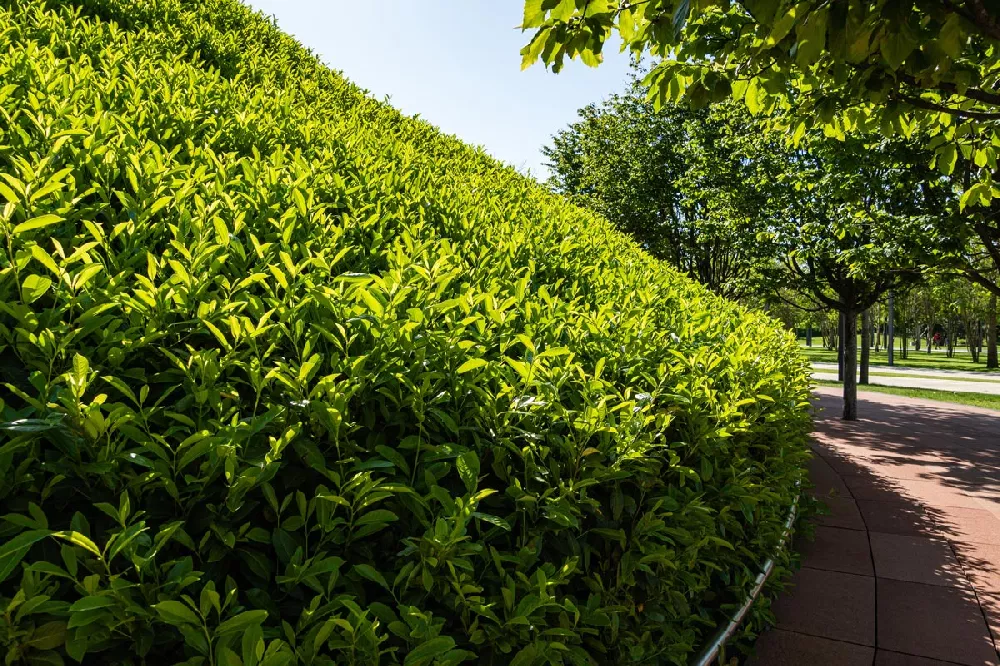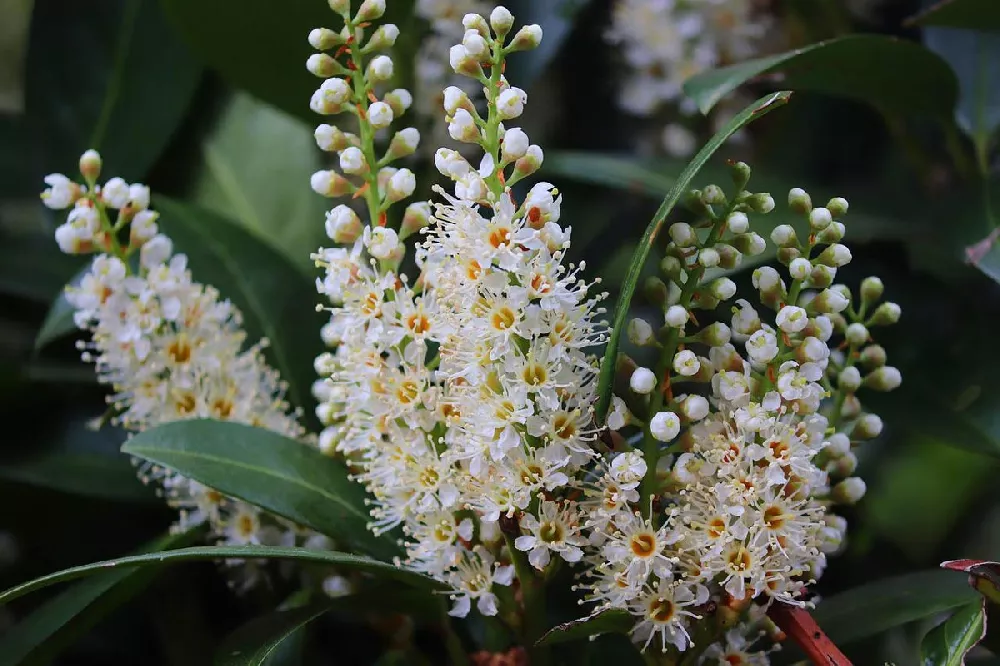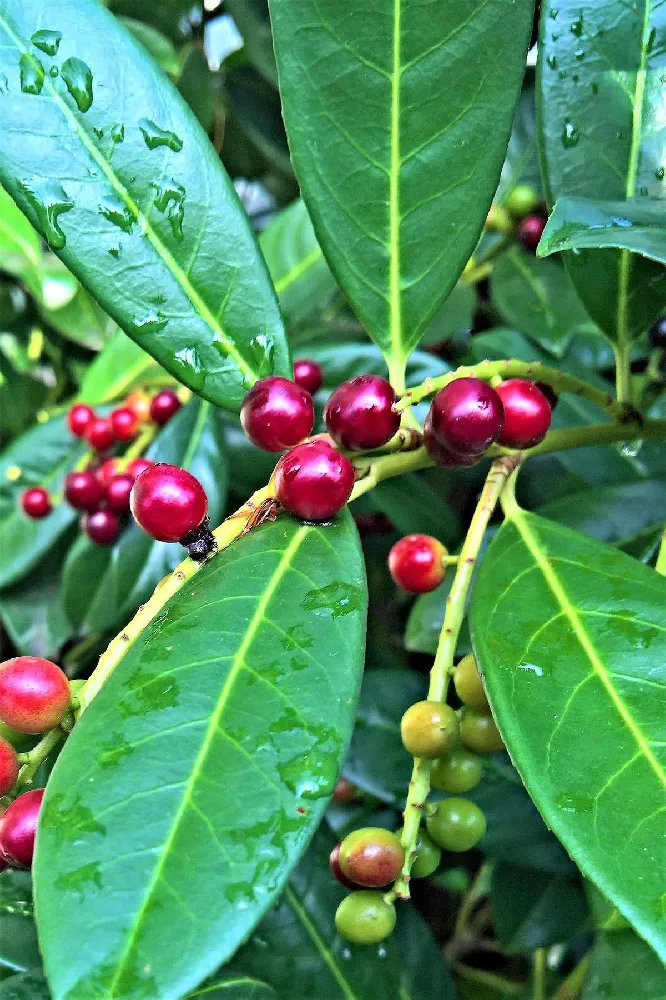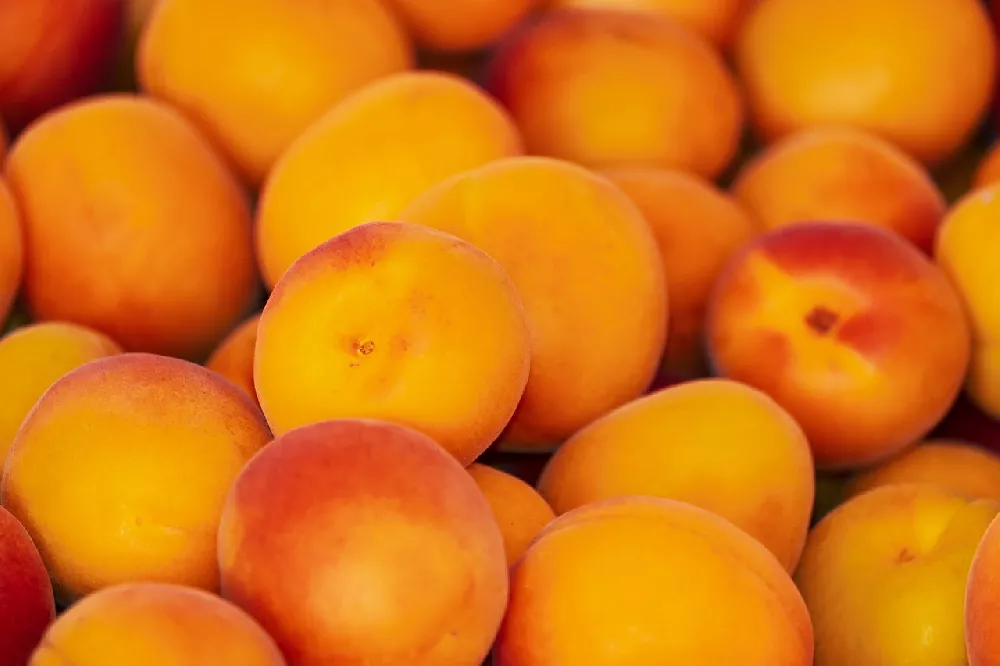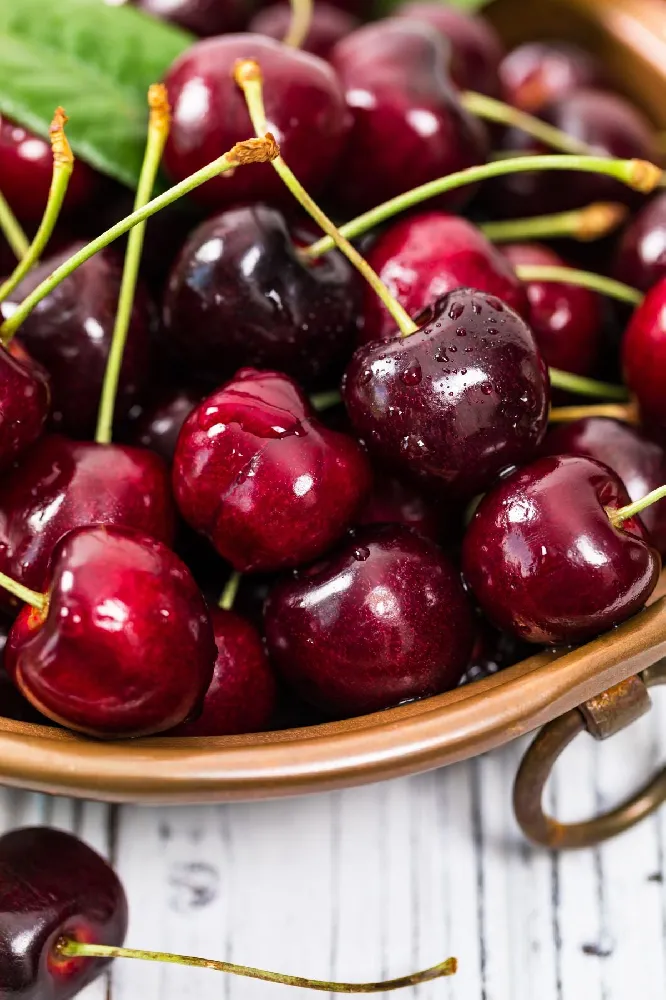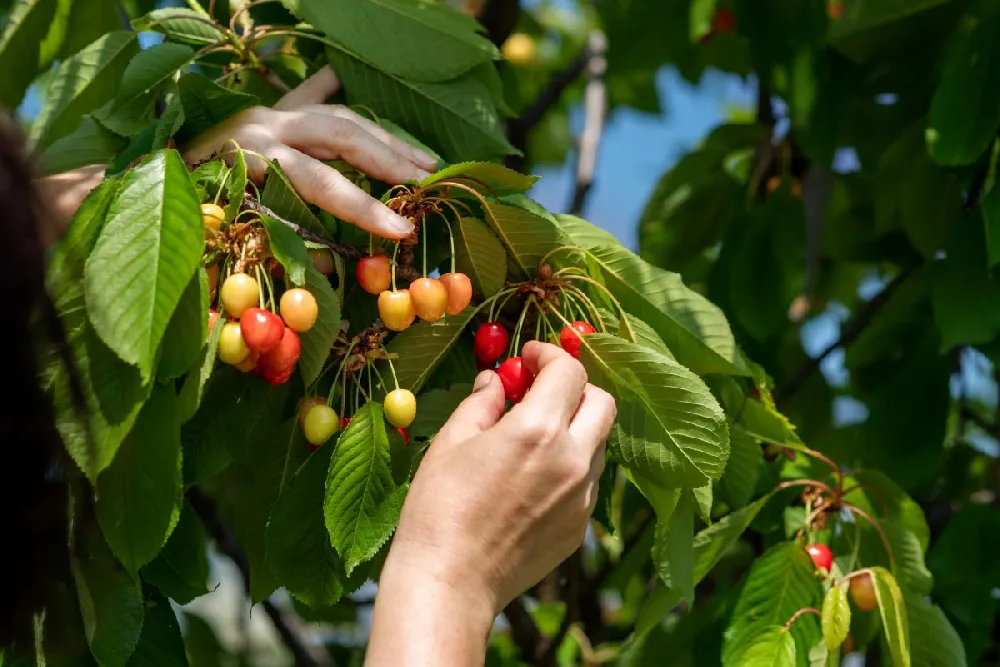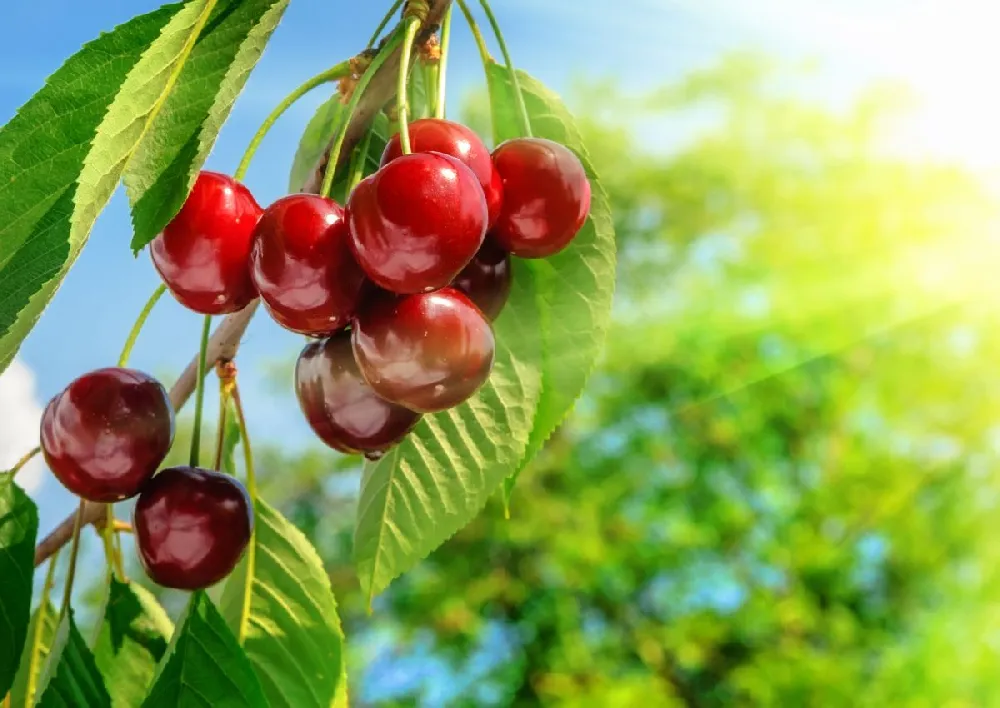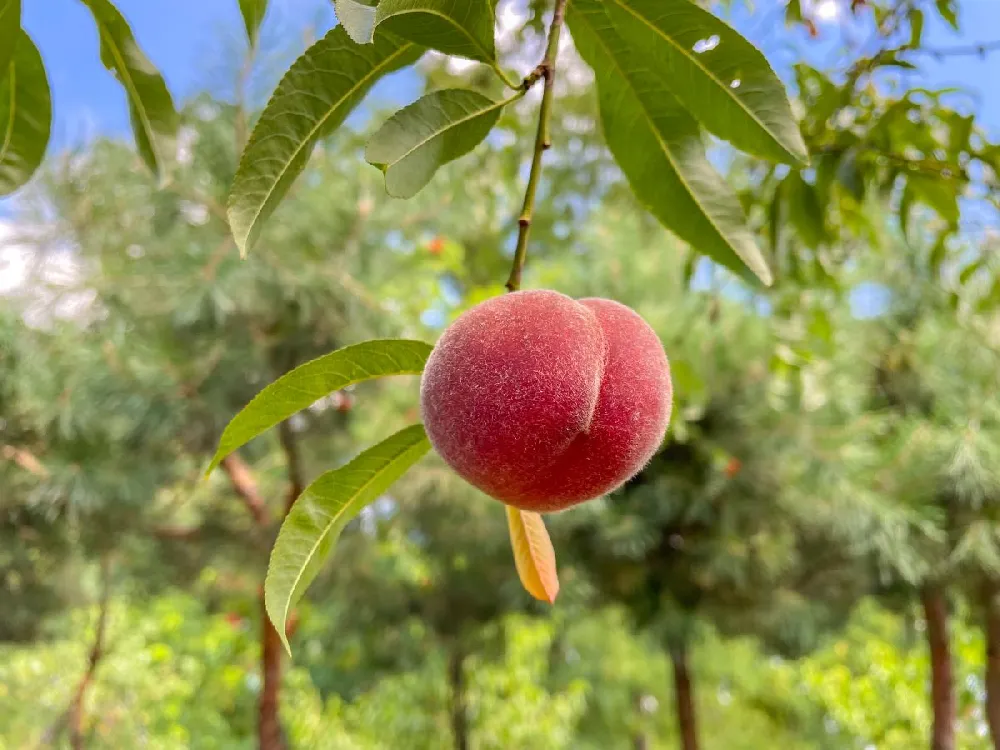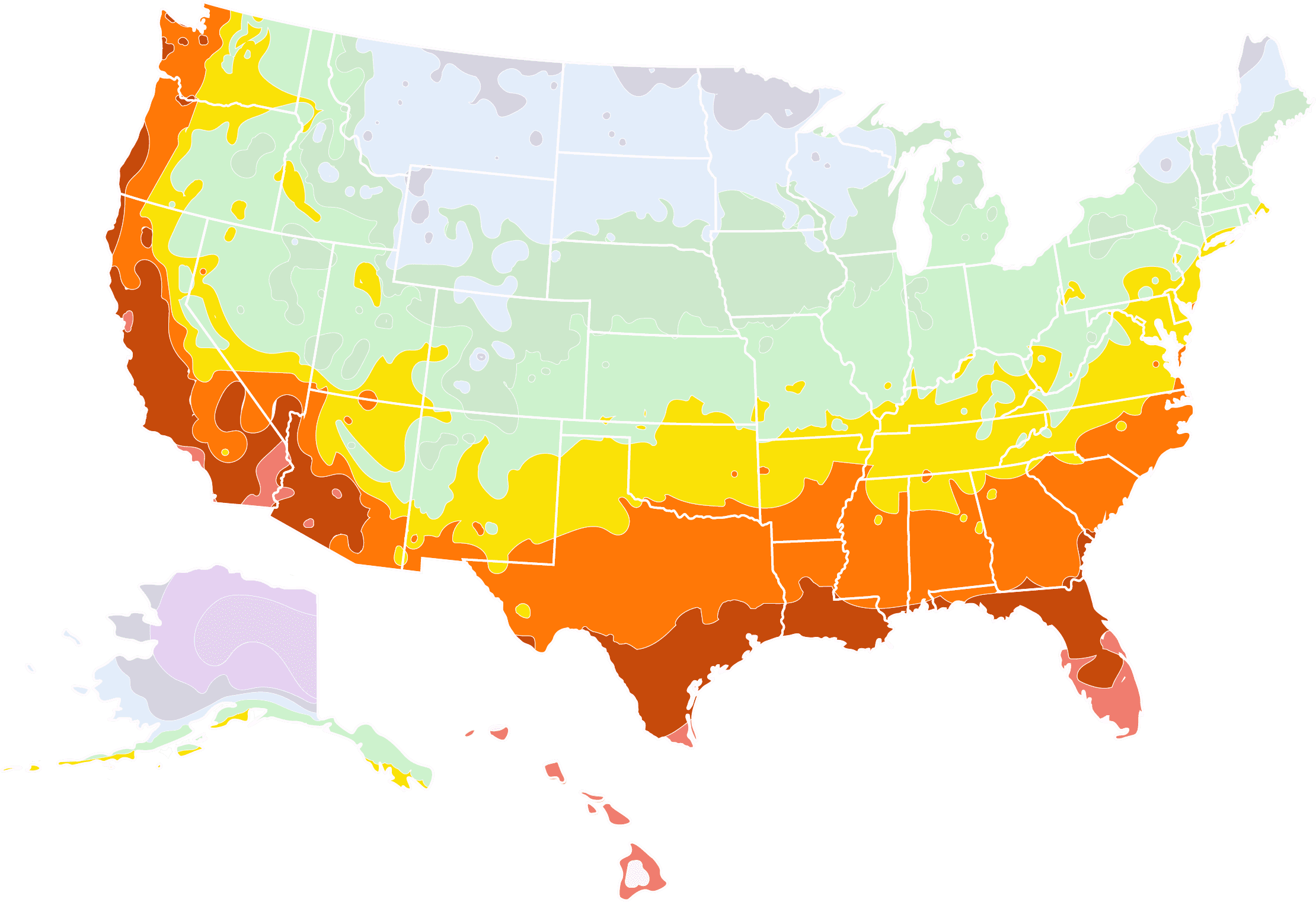- Home >
- Ornamental Plants >
- Cherry Laurel
Cherry Laurel for Sale - Buying & Growing Guide
Imagine having a hedge plant with lovely broadleaf evergreen leaves and a set of fragrant white springtime flowers. Better yet, imagine if this plant could survive in a wide range of sun conditions and soil types. The great news is that you don't need to picture such a plant — the cherry laurel, or Prunus laurocerasus, already exists. Not only does this plant deliver on all those valuable traits, but it also grows in a dense habit that allows it to create complete privacy all year long.
- Broad evergreen leaves with a glossy texture.
- Fuzzy white flowers that bloom in spring with attractive smells and textures.
- Adaptability to different amounts of light exposure, soil pH, and more.
Enter your zip code to find nearby stores that may carry this plant.
Plant Care
Sunlight

The cherry laurel survives in a wide range of sunlight exposures, including considerable shade.
Watering
Its water needs are low overall. Consider watering during hot spells and drought periods.
Fertilizing

Fertilize your cherry laurel once per year at most, during fall. High phosphorus fertilizer mixes can promote better flowering.
Planting and Care
Planting instructions
One of the greatest advantages of growing a cherry laurel is its adaptability. These plants survive in acidic and alkaline soils. They also grow in an incredibly wide range of light exposures, including full sun, partial shade, dappled shade, and full shade. As long as the soil in your planting location has great drainage, the chances are that your cherry laurel will adapt well. Once you choose a location, dig a hole that is significantly wider than the root ball and about as deep as the root ball is tall. Place your plant in the hole and backfill with organically-rich soil.
Watering and nutrients
Cherry laurels grow surprisingly well with relatively little supplemental watering and fertilization. Even when this plant is young, it will often tolerate dry soils. Provide water for this plant when the soil becomes excessively dry or when the weather is abnormally hot. You’ll also want to avoid over-fertilizing this plant. Give fertilizer once per year in the fall months or not at all. At times, a phosphorus-heavy fertilizer will produce the best results regarding the quantity and quality of the flowers.
Pollination
The flowers of cherry laurel, which arrive in late winter and can last through most of the spring, are alluring to both humans and several pollinator species. These plants provide early-season nectar for insects like bees. Since a single cherry laurel has both male and female flowers, pollination is easily achieved in most cases. However, pollination is not often a concern as, despite its name, gardeners do not grow this plant for its fruits. Instead, the main use of cherry laurel flowers is as a way to bring beauty and attractive scents to your yard.
Pruning
Cherry laurels are known to respond quite well to annual pruning. The plants achieve vigorous growth each year, and they can be trained into different shapes, including formal hedges. However, if you choose to prune yours, you need to be careful about your timing. Since this plant blooms in spring, a springtime pruning job can risk removing some of the year’s buds. Based on that factor, it is often best to prune this plant in the late spring or in the fall.
Pests, diseases, and animals
Pests can be a bothersome occurrence at times for a cherry laurel, but some insect infestations are more common than others. For instance, certain borers may attach to this plant, causing leaf dieback and bark damage. Scale insects can also be a problem, as can some fungal diseases. Many of these problems cause holes and other forms of leaf damage, which can make diagnosing the specific issue a bit more difficult. At times, cherry laurel can have problems with wind burns as well.
Achieving maximum results
While the cherry laurel is a fantastic plant for several reasons, it also has some negative traits of which you should be aware. For one, this plant contains a toxin called hydrogen cyanide. Hydrogen cyanide exists in multiple parts of this plant, including the berries and leaves, and it can be extremely dangerous when consumed in large quantities. The vigorous growth of this plant can also be challenging to control, and some jurisdictions view this plant as invasive.
FAQs
Are cherry laurels fast-growing?
Part of the reason the cherry laurel is so popular is that it is quite fast-growing. When these plants receive the care they need, they can easily put on more than 2 feet of new growth in a single growing season. This rapid rate allows this plant to form a reliable privacy hedge or windscreen in a relatively short time frame. However, this same characteristic can make this plant difficult to contain, and it may begin to compete with other plants if you don't control it.
How far apart should you plant cherry laurels?
The spacing you leave between cherry laurels depends on your goals. If you wish to grow a privacy hedge as quickly as possible, then you should space cherry laurels about 3 feet from one another. With that spacing, the plants will fill in as a hedge in just a few seasons. If you want to grow your cherry laurel as a specimen focal point, you can give this plant plenty more space.
Is cherry laurel safe for animals?
Cherry laurel is toxic to humans, but it can be surprisingly beneficial to wild animals. This plant provides nectar for pollinators, and the fruits that result can be a dependable food source for birds. Simultaneously, cherry laurel poses a threat to other animals. For example, dogs who eat this plant will experience a reaction that can be severe, which is why you should be careful about planting this species if you have pets.
Compare Similar Products
You can't add more Product Name - Product size to the cart.
OK